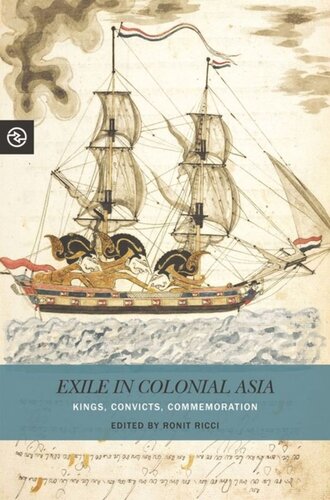

Most ebook files are in PDF format, so you can easily read them using various software such as Foxit Reader or directly on the Google Chrome browser.
Some ebook files are released by publishers in other formats such as .awz, .mobi, .epub, .fb2, etc. You may need to install specific software to read these formats on mobile/PC, such as Calibre.
Please read the tutorial at this link: https://ebookbell.com/faq
We offer FREE conversion to the popular formats you request; however, this may take some time. Therefore, right after payment, please email us, and we will try to provide the service as quickly as possible.
For some exceptional file formats or broken links (if any), please refrain from opening any disputes. Instead, email us first, and we will try to assist within a maximum of 6 hours.
EbookBell Team

4.8
24 reviewsExile was a potent form of punishment and a catalyst for change in colonial Asia between the seventeenth and early twentieth centuries. Vast networks of forced migration supplied laborers to emerging colonial settlements, while European powers banished rivals to faraway locations. Exile in Colonial Asia explores the phenomenon of exile in ten case studies by way of three categories: “kings,” royals banished as political exiles; “convicts,” the vast majority of those whose lives are explored in this volume, sent halfway across the world with often unexpected consequences; and “commemoration,” referring to the myriad ways in which the experience and its aftermath were remembered by those exiled, relatives left behind, colonial officials, and subsequent generations of descendants, devotees, historians, and politicians. Intended for a broad readership interested in the colonial period in Asia (South and Southeast Asia in particular), the volume encompasses a range of disciplinary perspectives: anthropology, gender studies, literature, history, and Asian, Australian, and Pacific studies.
In addition to presenting fascinating, little-known, and varied case studies of exile in colonial Asia and Australia, the chapters collectively offer a sweeping, contextualized, comparative approach that links the narratives of diverse peoples and locales. Rather than confining research to the European colonial archives, whenever possible the authors put special emphasis on the use of indigenous primary sources hitherto little explored. Exile in Colonial Asia invites imaginative methodological innovation in exploring multiple archives and expands our theoretical frontiers in thinking about the interconnected histories of penal deportation, labor migration, political exile, colonial expansion, and individual destinies.